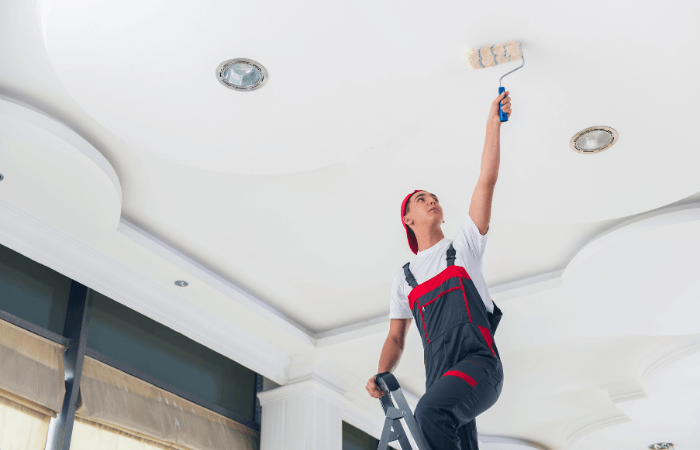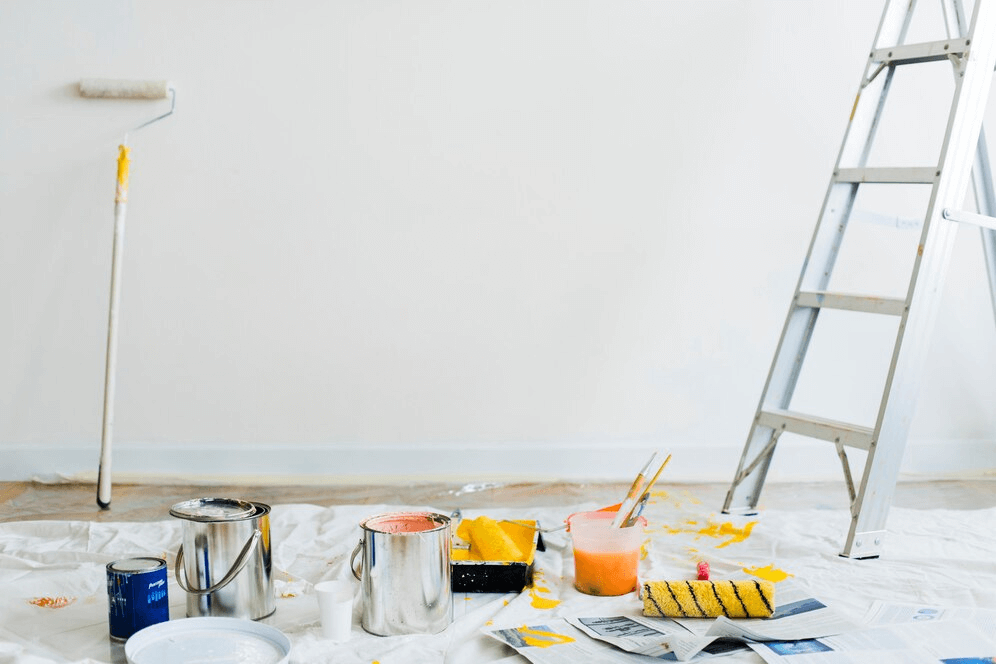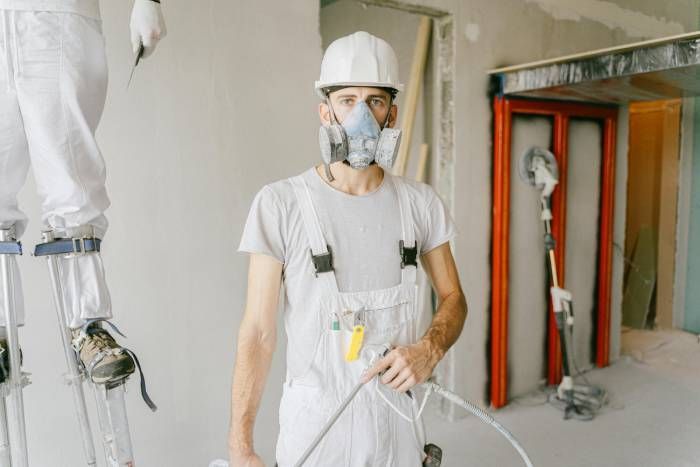Need Window Cleaning, Power Washing & Gutter Cleaning?
We do that too! Check out J&S Clean Pros:
How to Collaborate with Your NY Painting Contractor
Collaborating with a NY painting contractor offers an exciting opportunity to breathe new life into your space. This comprehensive guide is designed to help you navigate the process, guaranteeing a smooth and successful partnership. Whether you're looking to refresh your home or revamp a commercial property, understanding how to effectively work with your contractor is key.
From defining your vision to the final walkthrough, we'll cover everything you need to know to communicate effectively, manage your project efficiently, and achieve the stunning results you envision. Let's dive into the essential steps for a fruitful collaboration with your painting contractor.
Understanding the Roles of NY Painting Contractor
There are several key roles that a NY painting contractor fulfills, ensuring the success of residential, commercial, or industrial painting projects. These professionals are essential for the efficient execution and completion of painting tasks. Here’s a quick outline of their roles:
- Project assessment and quote preparation
- Color consultation and scheme planning
- Surface preparation and repairs
- Paint application and technique expertise
- Compliance with safety and environmental regulations
- Quality control and final inspections
- Client communication and progress updates
- Timely completion and clean-up
- After-service support and maintenance guidance
Step-by-Step Guide to Collaborate With Your NY Painting Contractor
Working with a NY painting contractor requires clear communication and planning to ensure your project meets your expectations. Here's a detailed seven-step guide to foster effective collaboration and achieve the best results:
Define Your Vision
Begin by clearly articulating your vision for the project. Collect color samples, inspirational images, and specify desired textures or finishes. Clearly defined expectations help your contractor understand your style preferences and project scope. This step is crucial for aligning both parties' expectations and enables your contractor to offer tailored advice and solutions that resonate with your vision. Discuss every detail, from the areas to be painted to the quality of materials you expect, ensuring there is a shared understanding that will guide all subsequent actions.
Set a Realistic Budget
Openly discuss your budget with your contractor. A clear discussion about finances will help set realistic expectations and ensure there are no surprises. Your contractor can provide a detailed breakdown of costs, including materials, labor, and any additional fees. This transparency helps you manage your finances better and allows the contractor to suggest cost-effective alternatives if necessary. Understanding the full financial scope of the project from the outset will help in planning and preventing conflicts during the execution phase.
Schedule Wisely
Scheduling is key, especially in a busy city like New York. Choose a time of year that is favorable for painting, typically late spring or early fall, to avoid extreme temperatures and humidity. Discuss with your contractor the best time to start the project, taking into account their availability and any building regulations or restrictions. Agree on a detailed timeline, including start and end dates, and ensure it aligns with both your availability and that of your contractor. Planning the schedule carefully prevents logistical issues and ensures the project proceeds smoothly without major disruptions.
Communicate Regularly
Establish a routine communication schedule to keep up with the project's progress. Decide on weekly updates through emails, calls, or in-person meetings. Regular communication lets you address any concerns promptly, provides an opportunity for feedback, and keeps you informed about the project's status. This step is vital for maintaining transparency, adjusting project details as needed, and building a trusting relationship between you and the contractor.
Prepare the Space
Preparing the area to be painted is crucial for a swift and smooth painting process. Move furniture and personal items out of the way, and cover anything that remains to protect it from paint drips. Discuss with your contractor whether they will handle this aspect or if you need to prepare beforehand. Also, consider the need for minor repairs or wall preparation that may be necessary before painting begins. Proper preparation ensures that the painting team can start immediately upon arrival and work efficiently, minimizing the disruption to your daily life.
Inspect Work Regularly
Conduct routine inspections of the work being done to ensure quality and adherence to your vision. This doesn't mean micromanaging every brush stroke but periodically checking in to see that the work meets your standards. Address any discrepancies or concerns immediately to keep the project on track. Regular inspections also provide an opportunity to appreciate the progress and maintain a quality check throughout the project duration.
Close Out the Project Properly
Once the painting is complete, do a final walkthrough with your contractor. Review the work together and ensure everything has been completed to your satisfaction. Discuss any touch-ups or adjustments that may be necessary. Once you are satisfied, finalize the paperwork, make the last payment, and ask for a receipt. It's also a good idea to inquire about maintenance and care of the new paint, ensuring longevity and preserving the look of your freshly painted space.
Frequently Asked Questions
How do I choose the right painting contractor for my project?
Selecting the right contractor involves researching and comparing different companies. Look for contractors with good reviews, proper licenses, and insurance. Consider their experience in projects similar to yours and ask for references or a portfolio of completed work. Initial consultations can also give you a feel for their professionalism and the compatibility of their working style with your needs.
What should I expect during the initial consultation with a painting contractor?
During the initial consultation, expect the painting contractor to assess the scope of your project, discuss your specific requirements, and possibly take measurements. They should ask questions about your design preferences, your timeline, and your budget. This meeting is also an opportunity for you to ask questions and gauge their expertise and customer service approach.
Can I remain in my home during the painting process?
Yes, you can usually stay in your home during the painting process, but it may require some coordination and flexibility. Discuss with your contractor how they plan to phase the project and what measures they will take to minimize disruption and ensure safety. For extensive projects, you might consider staying elsewhere if strong odors or significant dust could cause discomfort or health issues.
What type of paint is best for the fluctuating climate?
Choosing the right paint is vital for durability, especially given New York's varied climate. For exteriors, acrylic and latex paints are recommended due to their ability to withstand temperature changes and moisture. For interiors, the choice may depend more on the finish and ease of cleaning. Your contractor can recommend the best options based on the specific conditions of your project site.
Conclusion
Successful collaboration with a NY painting contractor is pivotal for achieving your desired results. By following these detailed steps, you can ensure a smooth process and a beautifully painted space that reflects your vision. Engage actively with your contractor, establish clear expectations, and maintain open communication throughout the project.
Ready to transform your area with expert painting services?
Contact us at J&S
Paint Pros today for professional residential and commercial painting solutions tailored to your needs. Let's bring your vision to life with precision and quality you can trust.













